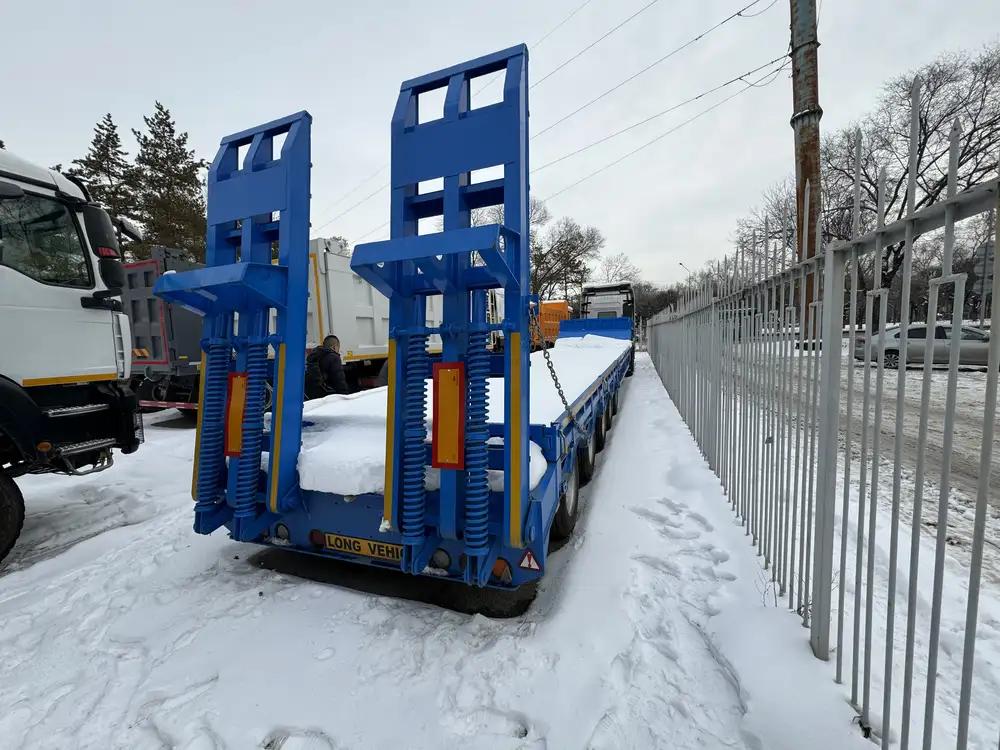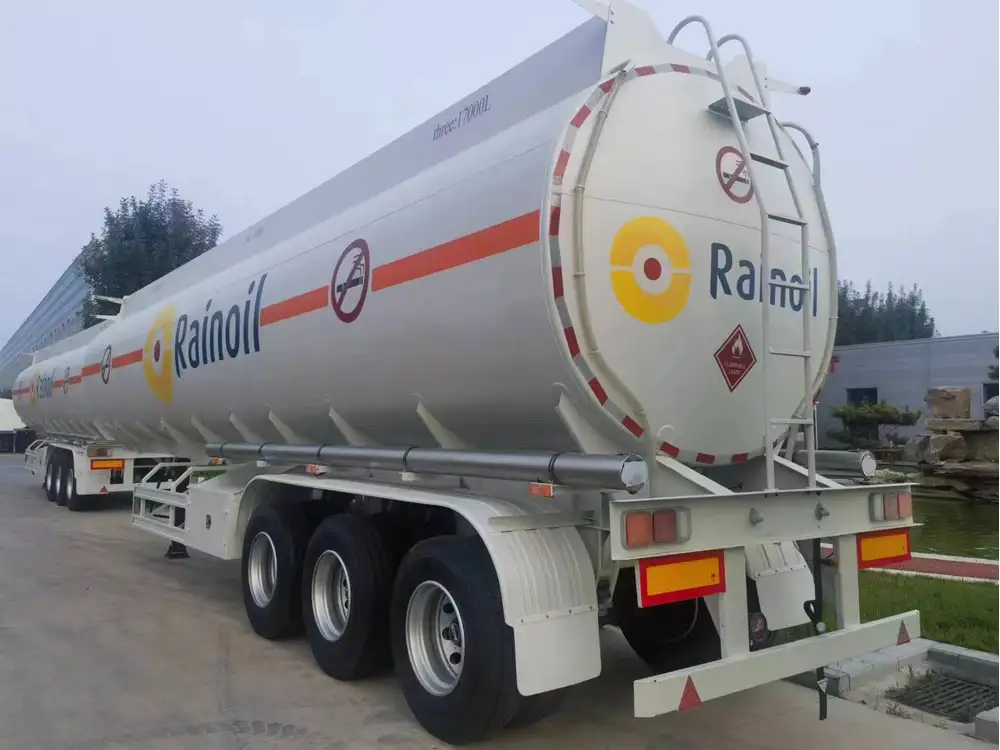The trucking industry serves as the backbone of commerce, enabling the movement of goods across vast distances. Among the crucial components of this system is the truck-tractor semi-trailer combination, a configuration that maximizes both efficiency and capacity in freight transport. In this article, we will dissect the various elements that comprise this vehicle type, delve into its operational features, and explore its significance within the logistics landscape.
The Anatomy of the Truck-Tractor Semi-Trailer
A truck-tractor semi-trailer combination consists of two primary elements: the truck-tractor, often simply referred to as the “tractor,” and the semi-trailer. Understanding each component is essential for appreciating how this configuration works as a cohesive unit.
1. The Truck-Tractor
The truck-tractor serves as the power unit of the combination. It is engineered to tow the semi-trailer, providing the necessary engine power and operational capabilities. Key features include:

Engine Specifications
- Horsepower and Torque: Truck-tractors typically feature powerful diesel engines capable of delivering upwards of 500 horsepower, along with significant torque to facilitate heavy hauling.
- Fuel Efficiency: Advanced fuel management systems are employed to optimize fuel consumption, which is crucial given the high operational costs associated with trucking.
Chassis and Suspension
- Frame Production: The chassis frame is made from high-strength steel or aluminum alloys, ensuring durability and low weight.
- Suspension System: Most tractors are equipped with air suspension systems, which enhance ride quality and stability when transporting heavy loads.
Cab Design
- Ergonomics: Modern truck-tractors come with highly ergonomic cabs, designed for driver comfort and long-distance hauls. Features include adjustable seats, climate control, and advanced navigation systems.
- Safety Features: Equipped with state-of-the-art safety technologies, such as lane departure warning systems and advanced braking assistance, these vehicles prioritize driver safety.

2. The Semi-Trailer
The semi-trailer is the cargo-carrying unit that connects to the truck-tractor via a fifth-wheel coupling mechanism. Its design is pivotal for maximizing load capacity and efficiency.
Dimensions and Configurations
- Length and Capacity: Semi-trailers vary in length, typically ranging from 48 to 53 feet, with a capacity of approximately 26,000 to 34,000 pounds, depending on the specific design and purpose.
- Types of Semi-Trailers: There are several kinds of semi-trailers tailored for different shipping needs:
- Flatbed Trailers: Ideal for transporting oversized or irregularly shaped loads.
- Refrigerated Trailers: Designed for perishable goods, maintaining a controlled temperature environment.
- Tanker Trailers: Used for transporting liquids, such as fuel or chemicals.
Load Distribution
- Weight Distribution: Correct load distribution is essential for the stability of the truck-tractor semi-trailer combination. There are specific guidelines and calculations, such as the Gross Vehicle Weight Rating (GVWR), to ensure safety and compliance with regulations.
- Securement Methods: Different methods, such as straps, chains, and tarps, are employed to secure cargo, minimizing the risk of load shifting while on the road.

Advantages of the Truck-Tractor Semi-Trailer Configuration
The truck-tractor semi-trailer combination offers numerous advantages that contribute to its popularity in freight transportation.
Enhanced Efficiency
- Improved Maneuverability: The articulated design of the truck-tractor semi-trailer allows for better handling in tight spaces, such as loading docks and urban settings.
- Payload Capacity: The separate structure of the trailer allows for substantial carrying capacity, making it feasible to transport large quantities of goods in a single trip.
Versatility
- Adaptable Designs: The ability to easily switch out different types of semi-trailers (flatbed, refrigerated, etc.) provides trucking companies with enhanced operational flexibility.
- Customizable Configurations: Depending on the intended cargo, a wide range of configurations and attachments can be utilized to meet specific needs.

Cost-Effectiveness
- Economic Efficiency: With lower operational costs compared to rigid trucks, the truck-tractor semi-trailer combination allows logistics companies to optimize their bottom line. The separation of tractor and trailer means that the tractor can take on multiple trailers in a day, maximizing its usage.
Long-Distance Travel
- Extended Range: This configuration is suited for long hauls due to its ability to carry heavy loads over long distances with relative ease.
Key Considerations in Operating Truck-Tractor Semi-Trailer Combinations
Operating a truck-tractor semi-trailer combination is complex, necessitating a comprehensive understanding of various operational, regulatory, and logistical factors.

Driver Qualification and Training
- Licensing Requirements: A commercial driver’s license (CDL) is mandatory for individuals operating these vehicles, ensuring they possess the necessary skills to manage heavy loads safely.
- Ongoing Training: Continuous education about the latest safety regulations and vehicle technologies is essential for safe operation.
Regulatory Compliance
- Weight Limit Regulations: Adherence to federal, state, and local regulations concerning weight limits is crucial. Compliance helps avoid fines and enhances safety on the road.
- Inspection and Maintenance: Regular inspections and maintenance schedules are imperative to uphold safety standards. This includes checks on brakes, tires, and lighting systems.
Route Planning
- Optimization Tools: Utilizing GPS technology and route optimization software allows for efficient trip planning, leading to reduced fuel consumption and improved delivery times.
- Time Management: Effective time management is essential to meet delivery schedules, requiring careful planning around regulations such as Hours of Service (HOS).

Maintenance of Truck-Tractor Semi-Trailer Combinations
Maintaining a truck-tractor semi-trailer combination is an intricate process that impacts performance, safety, and longevity.
Regular Inspections
- Daily Checks: Operators should perform pre-trip inspections, focusing on brakes, lights, tires, and coupling mechanisms to ensure readiness for travel.
- Scheduled Maintenance: Following a strict maintenance schedule, including oil changes, filter replacements, and brake inspections, helps prevent breakdowns and extends the lifespan of both the tractor and trailer.
Repair Considerations
- Common Repairs: Understanding the common issues that may arise, such as tire wear, brake issues, and engine troubles, can facilitate timely interventions, minimizing downtime.
- Service Providers: Establishing relationships with reliable service providers for both routine maintenance and emergency repairs is crucial for operational efficiency.

The Future of Truck-Tractor Semi-Trailer Combinations
The evolution of technology and regulations continues to shape the future of truck-tractor semi-trailer combinations.
Innovations in Technology
- Telematics and IoT: The integration of telematics and Internet of Things (IoT) technologies revolutionizes fleet management through real-time data analysis, improving operational efficiency and cargo monitoring.
- Electric and Autonomous Vehicles: The emergence of electric trucks and autonomous driving technologies represents a pivotal change in the long-haul trucking industry, promising to reduce emissions and enhance safety.
Regulatory Changes
- Sustainability Initiatives: Increasing pressure for sustainable practices is influencing regulations, encouraging trucking companies to adopt greener technologies and practices.
- Enhanced Safety Standards: As technologies evolve, so too do safety regulations, necessitating ongoing driver education and vehicle modifications to comply with new standards.

Conclusion
The truck-tractor semi-trailer combination is indispensable to the logistics industry, intricately designed to combine efficiency, capacity, and versatility. As we navigate the complexities associated with this vehicle type, from understanding its anatomical structure to the operational practices that ensure its success, it becomes clear that mastery of this system is paramount for stakeholders in the field. Through the integration of innovative technologies and adherence to regulatory frameworks, the future holds exciting potential for advancements in this vital segment of transportation. By committing to excellence in operation and maintenance, trucking companies can ensure their readiness for the challenges and opportunities that lie ahead.



